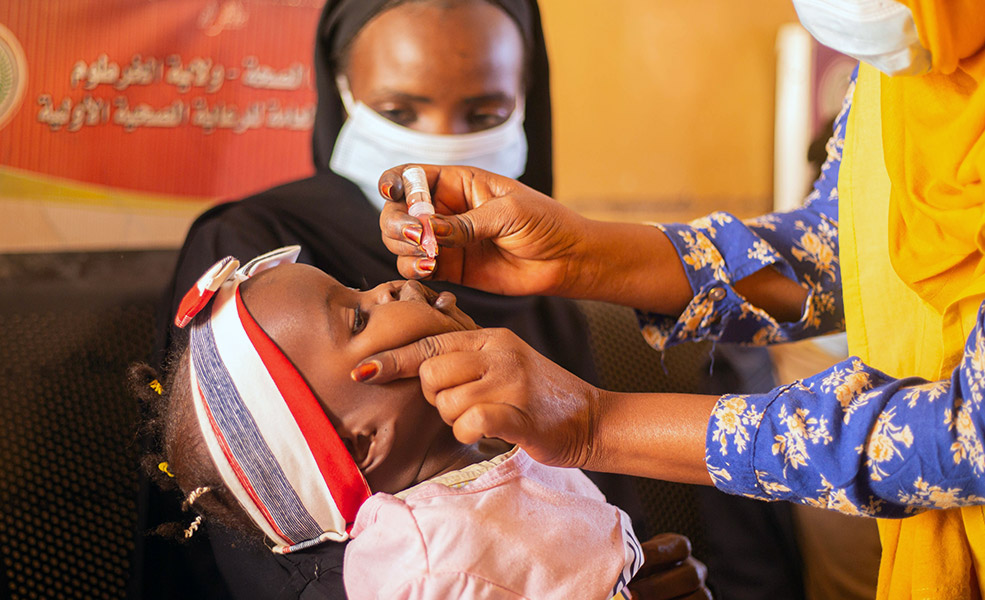 A child receives polio vaccine in Sudan during the national vaccination campaign conducted from 28 November - 1 December 2020.
A child receives polio vaccine in Sudan during the national vaccination campaign conducted from 28 November - 1 December 2020.
Polio eradication efforts in Sudan started in 1994, and the last indigenous wild poliovirus (WPV) case was reported in 2001. An importation in 2004 led to an outbreak and spread of the virus to countries in the Horn of Africa, with the last case reported in June 2005. Since then, Sudan has had several importations of WPV, most recently in 2009, when an importation led to five cases in two states. The genomic sequencing indicated a link with WPV circulating in South Sudan. Sudan has been polio-free since then, and in 2020 the African continent was certified free of WPV.
In recent years, Sudan has seen a vast increase in large-scale population movements across borders, as people flee economic scarcity, conflict and instability in sub-Saharan Africa. This movement amplifies the risk of disease importation and can challenge efforts to vaccinate every last child. Following extended concerns about diminishing immunity levels, in August 2020, a paralysed child tested positive for vaccine-derived poliovirus type 2, and an outbreak of circulating vaccine-derived poliovirus type 2 (cVDPV2) was declared.
Responding to cVDPV2 transmission
Sudan’s Federal Ministry of Health spearheaded a prompt response to the cVDPV2 outbreak, with round one of a national campaign in late November and early December 2020, and round two in late January 2021 (security issues in West Darfur delayed the round there into early February). Both rounds were carried out using monovalent type 2 vaccine (mOPV2) and the second round also featured vitamin A. Coverage was uniformly high, well above 90%.
An interim outbreak response assessment was conducted in October and November 2021 to review the response thus far, and a final assessment is planned for February 2022. As of end 2021, no further poliovirus isolates have been identified, but Sudan’s risk profile remains very high, considering recent political developments and challenges in delivering health care. Population movement into and out of Sudan also remains high from nearby countries with active cVDPV2 outbreaks.
Polio surveillance in Sudan
Sudan’s robust AFP surveillance network is led by the Federal Ministry of Health and delivered through state ministries of health. A team of 15 WHO medical officers and drivers further support the AFP surveillance network throughout the country. All surveillance indicators are consistently up to certification standards. The network is as diverse as it is broad, with active engagement from physicians, traditional healers, community leaders and members of civil society.
Environmental surveillance was first implemented in Sudan in 2016 with 5 sites in Khartoum state. In 2021, in response to the cVDPV2 outbreak, the network was expanded and additional staff were trained at nine sites in six states. State ministry of health personnel have been specially trained to take up this important surveillance mechanism.
Related stories
Sudan expands environmental surveillance sites to enhance detection of polioviruses
Training health workers to fight COVID-19 in Sudan
Sudan kicks off second response campaign against polio outbreak
UNICEF delivers 10 million doses of polio vaccine to Sudan
UNICEF, WHO support Sudan's efforts to end vaccine-derived polio outbreak
World Polio Day 2019: Sudan celebrates global eradication of wild poliovirus type 3


